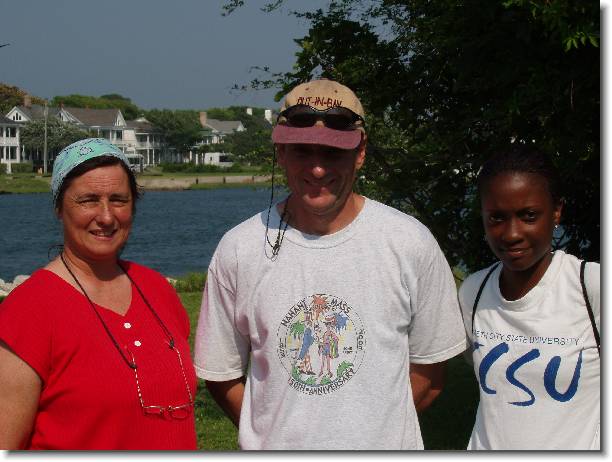
Mapping the seagrass resources of North
Carolina's Core and Back Sound
Mentors: Don Field (vitae)
and Jud Kenworthy (vitae)
Project Description:
The primary objective of this project is updating our knowledge of the
distribution and extent of seagrass in the Core and Bogue Sounds areas
of North Carolina, and comparing these data tko existing seagrass maps
created in the late 1980's and early 1990's to identify areas of change.
These two sounds also present an excellent opportunity to examine the
impacts on seagrass of two divergent coastal development regimes: the
relatively pristine conditions of Core Sounds versus the typical high
beach and coastal community development pressures in Bogue Sound.
Weather and water quality conditions
permitting, digital, aerial multi spectral imagery will be acquired
in the spring/early summer of 2005. This will provide the intern with
experience handling the latest in digital aerial multi spectral imagery.
Unlike air photos that are hard copy and need to be scanned and rectified
to be useful in a GIS format, these imagery products are provided by
the vendor in 1 meter spatial resolution, digital, rectified format.
The acquisition of the imagery, the ground data collection that will
support the classification of that imagery, and processing the imagery
will provide the intern with a full spectrum of experience of being
involved in a remote sensing based mapping and change detection effort
for submerged habitats. Considerable field work in small boats may be
necessary, which will give the intern experience using an underwater
video system integrated with Differential Global Position System (DGPS)
technology.
Prior skills: Experience with Arc View and or Arc GIS
Helpful skills: Experience working
in the field particularly from small
boats; experience with DGPS technology

The Relationship Between Sea Surface Temperature and Sea Height on Strandings of Harbor Porpoise Along the North Carolina Coast
Dr. Aleta Hohn
NOAA Beaufort Laboratory
101 Pivers Island Road
Beaufort, NC 29815
Tel: 252-728 8797 or 8732
Interns for the summer of 2004 will assist with determining whether an unusually high number of strandings of harbor porpoise during the winter of 1999 was due to an unusual juxtaposition of oceanographic features in the western the mid-Atlantic. The goals are to investigate whether a narrow band of cold water near shore followed by a strong warm water front results in higher numbers of stranded harbor porpoise than when the front is further offshore. Further, interns will examine the effects of wind speed and direction on both sea surface temperature and strandings. Positive results may allow for development of a model that predicts relative numbers of harbor porpoise strandings. This question has been a concern because an alternative explanation for unusually high numbers of strandings is entanglement of porpoises in gillnets along the mid-Atlantic coast. The interns will work on compiling extracted sea surface temperature (SST) and wind data, creating graphs and GIS plots, and assisting with analysis of the data. Only one other episode of alarming numbers of strandings of harbor porpoise in North Carolina has occurred in recent times and that was in 1977. Interns will use SST and wind data for years when it was available to ensure that the convergence of oceanographic events seen in 1999 did not occur in other years when high numbers of strandings also did not occur. Although comparable data do not exist for the 1970’s, oceanographic sampling cruises did collect data that may be useful. Access to these results will require a literature search.
Required skills:
Interns should have a background in the natural sciences (biology, geology, oceanography) and statistics, with knowledge of Geographic Information System (GIS). An interest in applying remotely-sensed data to studies of marine mammal strandings in also valuable. In addition, the interns will have the opportunity to participate in field activities including small boat surveys for bottlenose dolphins and stranding responses. A strong background in computers with experience using GIS is preferred, but not essential. All necessary training to complete the tasks will be available for the duration of the internship. Interns should be familiar with remotely sensed data including sea surface temperature and wind. Familiarity with statistical and numerical software packages such as MatLab, SAS, and SYSTAT would be beneficial.

Dr. John Hare and Dr. Aleta Hohn are my mentors.